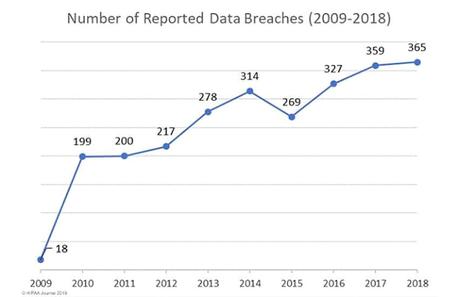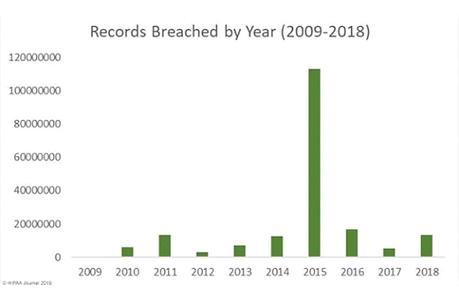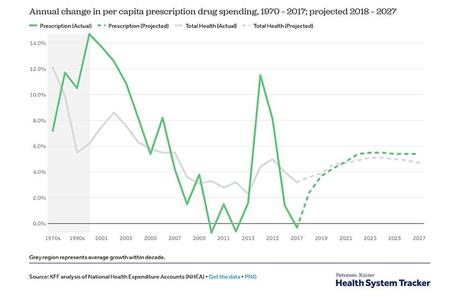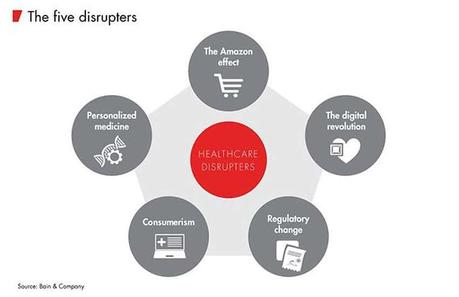
We live in a time when previous technologies have reached their peak and new technologies are on the verge to make a drastic impact on our lives. It seems Peter Thiel can get his fly cars very soon.
Well, the co-founder of PayPal, Thiel has valid concerns regarding decelerating technological innovations, ignorance to the world of things, and lack of government regulations, the recent developments in technology seem to efficiently address his concerns.
The new economy empowered by emerging technologies have changed the market landscape and no industry is untouched by this change.
Since healthcare is one of the most sensitive industries that is directly connected to us in almost all possible ways, emotionally, physically, mentally, and financially; the impact of the new economy and technology in healthcare requires immediate attention to address the challenge they bring.
If we take a look at the challenges faced by healthcare companies today, we will find that the concerns Peter Thiel had 7 years back were reasonable. The only difference is that now we are more empowered to resolve those challenges. Not all, but definitely the most of them.
List of Top 10 Healthcare Challenges Faced by Healthcare Service Providers
The healthcare scenario throughout the globe presents a contrasting landscape. At one end there are advanced medical devices, qualified medical professionals, and well-equipped hospitals and clinics, at the other end there is the rising cost of medical-care and ageing population trying desperately to fit in the complexity of the future.
In the midst of all, there are lives whose hopes and struggles totally depend on how efficiently the healthcare companies combat the healthcare challenges and reduce this contrast to deliver better medical care.
But before that, it is crucial that we acknowledge the healthcare industry challenges from multiple aspects. This list of top 10 challenges healthcare service providers face will help us in doing so. The list of healthcare industry challenges today goes like this:
1. Harnessing Advanced Health Technology
In the current tech landscape, dynamics of both hardware and software is changing. For instance, according to the UK Center for Health Solution report, 48 percent of medical devices are connected through IoT, which is expected to rise up to 68 percent in the next five years. Research firm MarketsandMarkets also reveals that the connected medical device market is expected to witness a three-fold rise from 2017 to 2022.
Even the software applications used in hospitals, such as Appointment Management System, Patient Administration System, and Laboratory Information Management System are now getting powered by advance techs like AI and machine learning.
To harness the potential of healthcare technology to transform the health systems and develop a connected healthcare environment, healthcare leaders and clinicians need to forge closer ties with medical manufacturers and software application development companies. They can share information and develop new business models and scenarios that can improve the adoption of new technology in healthcare.
2. Information and Integrated Health Services
Use of connected medical devices and AI-integrated software application can provide a massive amount of data to the healthcare companies which they can use to generate information.
This data can be of different types such as administrative data, patient medical records, connected device data, transcript & clinical notes, and patient surveys.
However, most care providers, even top healthcare companies, lack advanced architecture and data management systems to manage data collected from multiple sources.
The problem is use of relational databases that cannot efficiently manage unstructured data collected from multiple sources, means the value of the information they are getting is not absolute.
A transition from relational to the non-relational database could help healthcare service providers handle large and unstructured data. As the company grows and the flow of data increases, the database's architecture can be scaled to make room for the new data.
Healthcare companies need to plan all models for all the management layers-operational, tactical, and strategic, and partner with reliable integrator having mature service management process to support integrated health systems.
3. Cybersecurity
Connected medical devices and a greater need to keep the records of patient information attract the attention of malicious hackers to healthcare providers. As you can see, healthcare data breach statistics clearly reveal an upward trend in data breaches from 2009-2018.

Those breaches have resulted in theft/exposure of 189,945,874 healthcare records. That equates to more than 59% of the population of the United States.
If we analyze the health records exposed each year, we will see a massive increase in 2015, but the situation has improved since 2015 with successive falls in the number of exposed records.
These attacks call for a robust system for cybersecurity in healthcare, which could prevent data theft and loss of information and customers' conviction.
Even in 2014, almost all large health networks fell victim to cyber breaches with 20-percent of those attacks costing over one million dollars in recovery expenses.

Influenced by the impact of technology in healthcare, Healthcare companies are moving ahead with their digitization plans. Although they need to be very careful and take proper measures to maintain healthcare cybersecurity, such as:
Image sourceAnd if they are outsourcing their IT processes to health technology companies, which include sensitive information such as patients' personal information or transactional details, they should only rely on a HITRUST-certified third-party provider.
- Limit connected medical equipment access to trusted users
- Structure proprietary networks and spend on segregating external and internal medical devices on enterprise networks
- Follow application development security protocols
- Build a centralized system to manage information
4. Rising Healthcare Costs
The cost crisis in healthcare is not new. There are many stakeholders who play a key role in determining the cost of healthcare services, ranging from device manufacturers to medical drug manufacturing companies and payers to insurance policy providers.
Conflict is natural when so many stakeholders are involved. And developing a consensus requires strategic planning and time.
The rising cost of healthcare directly impacts the revenue of the healthcare companies, as increased cost discourages patients in many ways, from taking lab tests to doing regular follow-ups post visit, which ultimately leads to poor patient outcome.
According to Martin Gaynor, an economics professor at Carnegie Mellon University, " Health care spending is high, and it is ultimately unsustainable."
Here are a few things healthcare providers can do to reduce the healthcare costs for patients:
Some other internal measures could be taken by healthcare companies are reliance on healthcare information technology and developing a consensus with pharmaceutical companies.
- Provide local price variations to patients, either by healthcare providers or insurers
- Empower patients to choose high-value plans according to their wallets
- Reduce the number of medical tests for patients. According to a study mentioned by Dr. Atul Gawande, a surgeon, writer, public health researcher, 42% of patients received unnecessary tests in one year.
- Negotiate prescription drugs costs for consumers
Investment in IT healthcare
A study from Health Affairs reveals that US healthcare systems can rely on more "frugal innovations" or say "good enough" products that are economically feasible and not technically inferior as well.
For example, a report from Science Direct states that investment in IT healthcare such as revenue cycle management software has been proven to reduce the operational cost. According to the author, "The usage of financial management systems is associated with lower hospital operating expenses."
Besides, it is also the fact that administrative costs of United States account for or around 8% of their overall healthcare costs and the country could save $175 billion in healthcare costs by halving administrative costs-Jama Network.
5. Payment Processing and Invoicing
According to the KF health tracking poll, although most of the people confirmed that they can afford their treatment, but one out of four faced difficulty in affording their medicine.

A combined effort from healthcare companies, insures, and benefactors can help curb the rising cost of healthcare and thus help to solve one of the major challenges in healthcare.
This effort leads to the development of effective medical billing processes and procedures model, under which financial incentives could be associated with patient outcomes rather than service quantities. The new payment model could also address the concern of Dr. Gawande for unnecessary medical tests.
Image sourceMany patient advocates are now pushing for the new model that delivers quality over quantity, which could play a key role in improving patient outcomes at a lower cost. Healthcare service providers can create different versions of healthcare payment processing models, including invoicing and payment model depending on their business structure.
One of the successful models is 1ACO (Accountable Care Organization) wherein healthcare groups take responsibility for improving patient outcomes at a reduced cost.
Besides, healthcare companies can break the whole payment into small chunks to help patients/payers better plan their finances and mode of payment.
Again, they can collaborate with medical billing companies to develop healthcare billing systems with powerful features such as flexible invoice management dashboard, advance collection and adjustment, separate OP and IP billing queue screen can help healthcare providers offer patient-centric solution and combat healthcare industry challenges more efficiently.
6. Pressure on Pharmaceutical Prices
At the beginning of the year 2019, RX Savings Solutions report revealed that around three dozen drugmakers have raised prices on more than 250 prescription drugs. It means the average price of the drugs will be increased by 6.3%. By contrast, the inflation rate in the US for the past 12 months through November has been just 2.2%.
Increase in prescription prices has led to the slow growth of prescription spending.

The rise in pharmacy prescription prices is one of the major healthcare challenges for both healthcare enterprise and patients. According to Michael Rea, CEO of the Rx Saving Solutions, "The reason it can keep happening is there is no market check, no person or entity to bring reason to determining drug prices."
An industry-based regulatory body can be formed including all the representatives of all the stakeholders of healthcare and pharmaceutical industries to at least control the hike in prices.
7. Healthcare Regulatory Changes
Image sourceRegulatory challenges affect healthcare companies in two ways: one is it drives up the cost of healthcare services and second is it creates confusion among the general public, which is required to be addressed in a precise and proper manner to avoid lawsuits.
Timely reforms in healthcare laws and regulations are necessary, but the problem is that companies are often not read to address the challenges that they bring.
For example, Trump administration is now working on regulating Medicare and Medicaid eligible healthcare providers. Research reveals that these laws and regulations in healthcare industry will burden the healthcare providers to meet new reporting requirements and comply with a range of revised standards including:
A lack of effort by healthcare service providers could lead to entanglement in complex lawsuit and penalty. To effectively combat these healthcare challenges, healthcare providers need to create a platform to raise awareness and share information quickly with all the bodies.
8. Healthcare Staffing Shortages
Many industry groups have predicted a shortage of around 100,000 doctors by 2030. Here, technology can help in many ways such as the use of telehealth can help in a big way. Live streaming, store-and-forward imaging, remote patient diagnostics can improve access to healthcare even in remote regions.
- Health Insurance Portability and Accountability Act (HIPAA)
- Centers for Medicare and Medicaid Services (CMS)
- Joint Commission on Accreditation of Healthcare Organizations (JCAHO)
According to the Bureau of Labor Statistics' Employment Projections 2016-2026, also projects the need for an additional 203,700 new RNs each year through 2026 to fill newly created positions and to replace retiring nurses.
However, professional development on a regular basis and improvement in infrastructure are the key to reducing staffing shortages in healthcare.
The influx of technology in the healthcare industry has completely changed the way training and education is imparted in the healthcare sector. A shift from a traditional clinical interview with a focus on acute illness to involving patients and better staff communication can be seen, which is a good sign in terms of professional development and efficient healthcare workforce shortage solutions.
9. External Market Disruption
There are many external forces that have made tentative inroads into healthcare, causing disruptive innovation in healthcare. Increased use of smartphones and the rise of mobile apps and ecommerce platforms have drastically changed the way businesses interact with their customers.
Healthcare consumers are no different. In fact, they are emotionally and physically vulnerable and so more sensitive to the quality of services.
According to Bain & Company, there are 5 key disruptors, which will cause disruptive innovation in healthcare and set the healthcare trends. They are:

These disruptors open up doors for new players outside the healthcare industry, leading to increased competition and healthcare industry challenges. Companies such as JPMorgan Chase, Amazon, and Berkshire Hathaway have announced last year to deliver healthcare to their employees in yet-unspecified ways.
Amazon has also acquired wholesale pharmaceutical distribution licenses in several United States. Besides, there are other non-traditional players like Apple, Samsung, Alibaba, and Tencent have entered into the market.
These companies, powered by technology, have introduced digital disruption in healthcare and consumerism into the healthcare industry, which rings the alarm bell for existing players to investment Digital Transformation and other emerging technologies like AI, Machine Learning, and IoT.
10. The Opioid Crisis
Image sourceIn 2017, the New York Times reported that drug overdoses are the leading cause of death for Americans under 50. The report created an alarm for policymakers and healthcare providers that firm action is required to combat one of these latest challenges in healthcare.
Although, there is still a lack of consensus or regulatory body that checks the use of opioids, a class of drugs which is available legally by prescription.
Misuse of prescription drugs is gradually gaining recognition in America. It is important that healthcare enterprises and pharmaceutical companies come together to propagate tighter laws and restrict the misuse of prescription drugs by the general public.
Conclusion
When making decisions in 2019, healthcare enterprises have to consider a range of healthcare challenges that emerge with new technology and change the market practices. To thwart the challenges in healthcare, it is essential they map their requirements and preferences of their consumers and based on that create an implementation approach.
